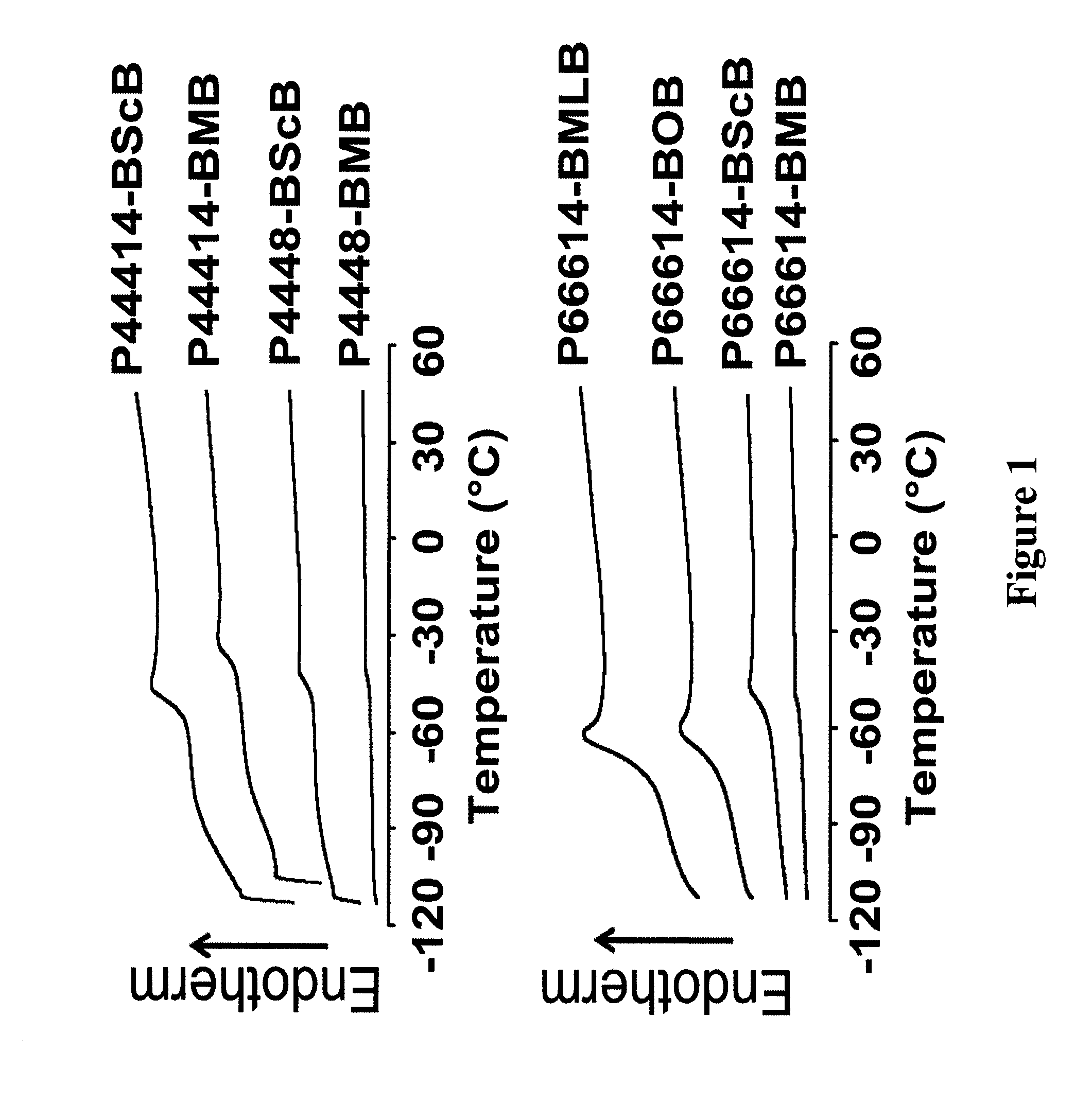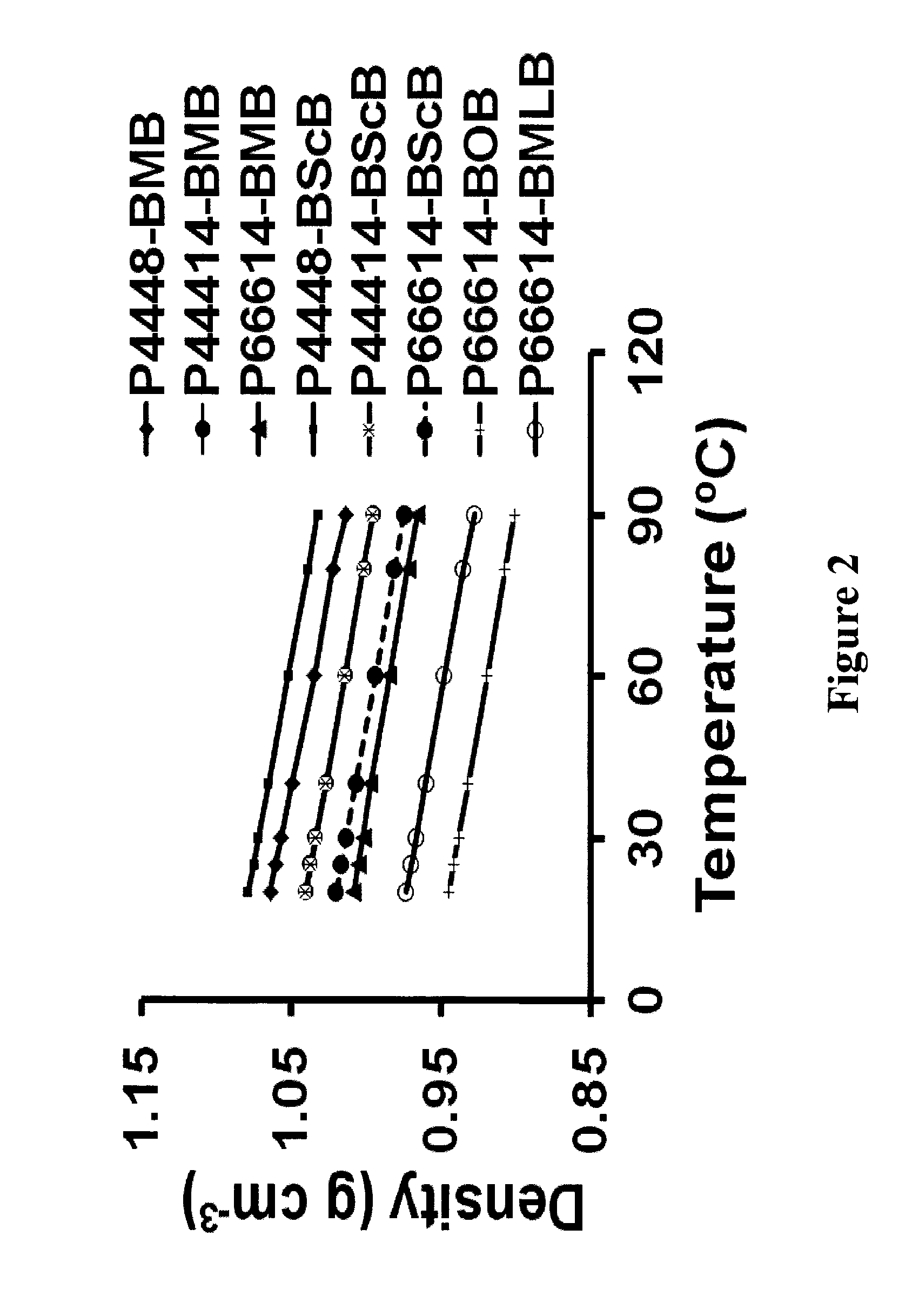Ionic-liquid-based lubricants and lubrication additives comprising ions
a technology of ionic liquid and additives, which is applied in the field of anti-wear and friction-reducing lubricant components, can solve the problems of high friction and wear loss, adversely affecting the fuel economy, environmental and human health, and commercially available lubricants that are yet not suitable for lightweight non-ferrous materials
- Summary
- Abstract
- Description
- Claims
- Application Information
AI Technical Summary
Benefits of technology
Problems solved by technology
Method used
Image
Examples
example 1
Tributyloctylphosphonium bis(mandelato)b orate ([P4448][BMB])
[0059]
[0060]Mandelic acid (3.043 g, 20 mmol) was added slowly to an aqueous solution of lithium carbonate (0.369 g, 5 mmol) and boric acid (0.618 g, 10 mmol) in 50 mL water. The solution was heated up to about 60° C. for two hours. The reaction was cooled to room temperature and tributyloctylphosphonium chloride (3.509 g, 10 mmol) was added. The reaction mixture was stirred for two hours at room temperature. The organic layer of reaction product formed was extracted with 80 mL of CH2Cl2. The CH2Cl2 organic layer was washed three times with 60 mL water. The CH2Cl2 was rotary evaporated at reduced pressure and product was dried in a vacuum oven at 60 for 2 days. A viscous colorless ionic liquid was obtained in 84% yield (5.30 g). m / z ESI-MS (−): 311.0 [BMB]−; m / z ESI-MS (+): 315.3 [P4448]+.
example 2
Tributyltetradecylphosphonium bis(mandelato)borate ([P44414][BMB])
[0061]
[0062]The procedure is similar to that used in the synthesis of [P4448][BMB]. The reaction started with (0.369 g, 5 mmol) of lithium carbonate, (0.618 g, 10 mmol) of boric acid, (3.043 g, 20 mmol) of mandelic acid and tributyltetradecylphosphonium chloride (4.349 g, 10 mmol). A viscous colorless ionic liquid was obtained in 81% yield (5.75 g). m / z ESI-MS (−): 310.9 [BMB]−; m / z ESI-MS (+): 399.2 [P44414]+.
example 3
Trihexyltetradecylphosphonium bis(mandelato)borate ([P66614][BMB])
[0063]
[0064]The procedure is similar to that used in the synthesis of [P4448][BMB]. The reaction started with (0.369 g, 5 mmol) of lithium carbonate, (0.618 g, 10 mmol) of boric acid, (3.043 g, 20 mmol) of mandelic acid and trihexyltetradecylphosphonium chloride (5.189 g, 10 mmol). A viscous colorless ionic liquid was obtained in 91% yield (7.25 g). m / z ESI-MS (−): 311.0 [BMB]−; m / z ESI-MS (+): 483.3 [P66614]+.
PUM
 Login to View More
Login to View More Abstract
Description
Claims
Application Information
 Login to View More
Login to View More - R&D
- Intellectual Property
- Life Sciences
- Materials
- Tech Scout
- Unparalleled Data Quality
- Higher Quality Content
- 60% Fewer Hallucinations
Browse by: Latest US Patents, China's latest patents, Technical Efficacy Thesaurus, Application Domain, Technology Topic, Popular Technical Reports.
© 2025 PatSnap. All rights reserved.Legal|Privacy policy|Modern Slavery Act Transparency Statement|Sitemap|About US| Contact US: help@patsnap.com



